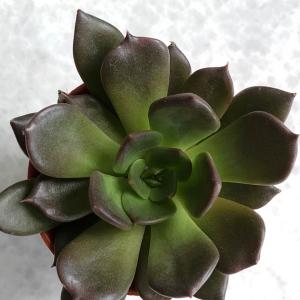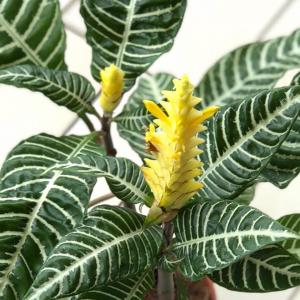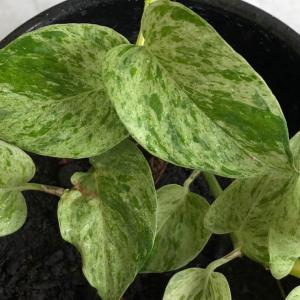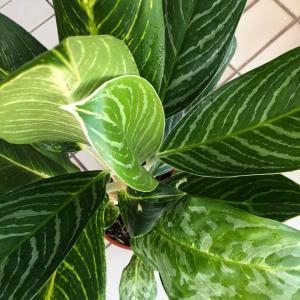文章
Miss Chen
2018年04月17日

If you want an abundant crop of orange pumpkins for use at Halloween or for making pies for Thanksgiving, Ohioans must prepare a garden plot and plant after danger of frost passes in spring. Depending on pumpkin cultivar, a warm growing period of 100 to 120 days allows the pumpkin vine to flower and develop harvestable fruits. If possible, time the spring planting so that the pumpkins ripen on the vine in early October.

Planting Time
Pumpkins do not tolerate frost. Across the vast majority of Ohio, the last frost in spring occurs anytime from April 21 to May 10, depending on latitude and elevation. Contact your local cooperative extension office to learn of the last spring frost date in your county, or speak to staff at your local garden center. Wait an additional two to four weeks after your area's last frost date to allow the garden soil to sufficiently warm to at least 65 degrees Fahrenheit. An appropriate pumpkin planting time frame is from mid-May to early June in most parts of Ohio.
Timing Considerations
Because pumpkins take 100 to 120 days from germination to harvest, you don't want to plant pumpkin seeds or transplants too early in spring. Although you must avoid frost, cool soil temperatures inhibit growth and may lead to root rot. Pumpkins tend to soften and rot on the vine if they ripen too early, such as in late August or September. Aim for pumpkins to pick around October 1. Look at the pumpkin seed packet for the "days to harvest" data. Count backward that number of days from the target October harvest date. This provides you the ideal sowing date in your Ohio locale.
Planting Pumpkin Seeds
Sow pumpkin seeds in hills. A hill is a shallow planting basin about 1 inch deep and 6 to 10 inches wide. Place four or five pumpkin seeds in the hill and cover with 1 inch of soil. Additional hills need to be spaced 6 to 10 feet apart. Hills oriented in long rows need about 15 feet between rows. This allows room for the sprawling vines to grow and still receive ample sunlight.

Growing Giant Pumpkins
Everyone admires a gigantic pumpkin to use as a jack-o' lantern around Halloween. The pumpkin varieties that produce the largest fruits need at least 120 days to germinate, grow and produce ripe pumpkins. According to David A. Mangione of the Ohio State University Extension, it's behooving to start seeds of these long-maturation pumpkins indoors about two weeks before planting them outdoors. He suggests sowing seeds indoors in late April and transplanted them outdoors in May or June when soil is warm and frosts no longer occur.

Planting Time
Pumpkins do not tolerate frost. Across the vast majority of Ohio, the last frost in spring occurs anytime from April 21 to May 10, depending on latitude and elevation. Contact your local cooperative extension office to learn of the last spring frost date in your county, or speak to staff at your local garden center. Wait an additional two to four weeks after your area's last frost date to allow the garden soil to sufficiently warm to at least 65 degrees Fahrenheit. An appropriate pumpkin planting time frame is from mid-May to early June in most parts of Ohio.
Timing Considerations
Because pumpkins take 100 to 120 days from germination to harvest, you don't want to plant pumpkin seeds or transplants too early in spring. Although you must avoid frost, cool soil temperatures inhibit growth and may lead to root rot. Pumpkins tend to soften and rot on the vine if they ripen too early, such as in late August or September. Aim for pumpkins to pick around October 1. Look at the pumpkin seed packet for the "days to harvest" data. Count backward that number of days from the target October harvest date. This provides you the ideal sowing date in your Ohio locale.
Planting Pumpkin Seeds
Sow pumpkin seeds in hills. A hill is a shallow planting basin about 1 inch deep and 6 to 10 inches wide. Place four or five pumpkin seeds in the hill and cover with 1 inch of soil. Additional hills need to be spaced 6 to 10 feet apart. Hills oriented in long rows need about 15 feet between rows. This allows room for the sprawling vines to grow and still receive ample sunlight.

Growing Giant Pumpkins
Everyone admires a gigantic pumpkin to use as a jack-o' lantern around Halloween. The pumpkin varieties that produce the largest fruits need at least 120 days to germinate, grow and produce ripe pumpkins. According to David A. Mangione of the Ohio State University Extension, it's behooving to start seeds of these long-maturation pumpkins indoors about two weeks before planting them outdoors. He suggests sowing seeds indoors in late April and transplanted them outdoors in May or June when soil is warm and frosts no longer occur.
0
0
文章
Miss Chen
2018年04月17日

Growing lettuce (Lactuca sativa) in your garden means you can have the freshest leaves for perfectly crisp salads. To enjoy the best-tasting fruits of your labors, it all comes down to picking the lettuce leaves at the right time and storing the lettuce correctly after you've harvested it.

Check Your Calendar
How long it is since you sowed the seeds provides a quick way to estimate when lettuce should be ready for harvesting.
A crisphead lettuce variety, which grows into a hard, tight head of leaves, is ready for harvesting approximately 75 days after planting.
As their name implies, loose-leaf lettuces don't form a head and are ready in as little as 45 days.
Butterhead varieties, which soft heads of loose leaves, are ready in 55 to 75 days.
Romaine varieties grow into tall, cylindrical heads of folded leaves and take approximately 70 days to mature.
Pick It Early
Pick lettuce in the early morning before the heat of the day causes the lettuce leaves to lose their crispness. Lettuce is fresher and crisper at this time and also tastes sweeter.
Test for Readiness
For loose-leaf lettuce varieties, the outer leaves can be harvested on a continuous basis when the plant reaches its harvest-ready date. As you pick the outer leaves, the plant continues to grow from the middle. These leaves should be full sized and tender. Woody leaves were left on the plant too long and will taste bitter.
Butterhead lettuce and other head varieties are ready for harvesting when the inner leaves have formed a head and the plants approach their variety-specific maturity date. To test if the head is ready, gently push down with the back of your hand. It should feel firm and crisp.

Harvest Methods
Harvest methods differ depending on the type of lettuce you're picking. For loose-leaf varieties, use your fingers to pinch off individual lettuce leaves at the base of the plant. For lettuce heads, use a sharp knife or pruning shears and cut off the entire head at its base, approximately 1 inch above soil level. Use cutting tools that have been wiped with a cloth soaked in rubbing alcohol. This helps prevent the spread of disease.
Cleaning and Storing Lettuce
Refrigerate lettuce leaves immediately after picking, as unrefrigerated leaves can wilt within 15 minutes of harvesting. Place the lettuce in a loose plastic bag, unwashed. Washed lettuce deteriorates quickly, but dry, unwashed lettuce can last for up to 14 days in your fridge's crisper drawer. When you're ready to use the lettuce, rinse each leaf under cold running water to get rid of dirt and any other debris.

Check Your Calendar
How long it is since you sowed the seeds provides a quick way to estimate when lettuce should be ready for harvesting.
A crisphead lettuce variety, which grows into a hard, tight head of leaves, is ready for harvesting approximately 75 days after planting.
As their name implies, loose-leaf lettuces don't form a head and are ready in as little as 45 days.
Butterhead varieties, which soft heads of loose leaves, are ready in 55 to 75 days.
Romaine varieties grow into tall, cylindrical heads of folded leaves and take approximately 70 days to mature.
Pick It Early
Pick lettuce in the early morning before the heat of the day causes the lettuce leaves to lose their crispness. Lettuce is fresher and crisper at this time and also tastes sweeter.
Test for Readiness
For loose-leaf lettuce varieties, the outer leaves can be harvested on a continuous basis when the plant reaches its harvest-ready date. As you pick the outer leaves, the plant continues to grow from the middle. These leaves should be full sized and tender. Woody leaves were left on the plant too long and will taste bitter.
Butterhead lettuce and other head varieties are ready for harvesting when the inner leaves have formed a head and the plants approach their variety-specific maturity date. To test if the head is ready, gently push down with the back of your hand. It should feel firm and crisp.

Harvest Methods
Harvest methods differ depending on the type of lettuce you're picking. For loose-leaf varieties, use your fingers to pinch off individual lettuce leaves at the base of the plant. For lettuce heads, use a sharp knife or pruning shears and cut off the entire head at its base, approximately 1 inch above soil level. Use cutting tools that have been wiped with a cloth soaked in rubbing alcohol. This helps prevent the spread of disease.
Cleaning and Storing Lettuce
Refrigerate lettuce leaves immediately after picking, as unrefrigerated leaves can wilt within 15 minutes of harvesting. Place the lettuce in a loose plastic bag, unwashed. Washed lettuce deteriorates quickly, but dry, unwashed lettuce can last for up to 14 days in your fridge's crisper drawer. When you're ready to use the lettuce, rinse each leaf under cold running water to get rid of dirt and any other debris.
1
0




















